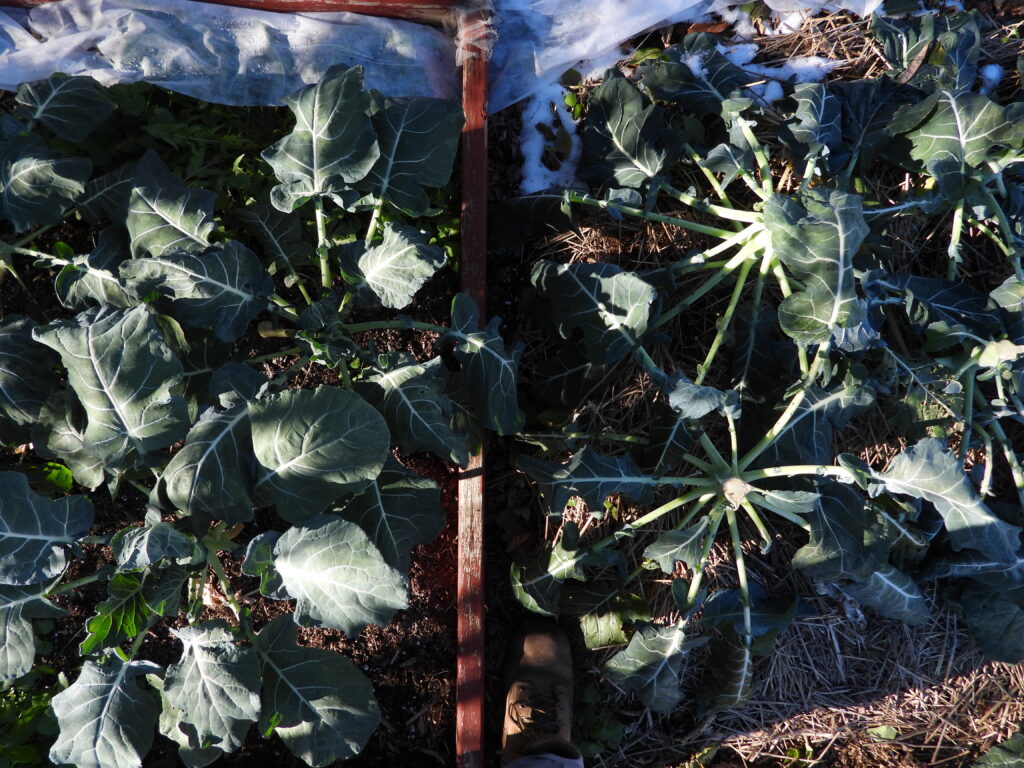
I’ve written a lot in the past about critical temperatures of spring crops (especially flowering fruits), but I realized I don’t say much about what fall crops can handle. Usually, we’re down to the hardiest vegetables by the time we get a hard freeze. But this year, a very dry late summer meant some fall crops were running late, which was okay because we enjoyed a very long lingering autumn. Then the forecast suddenly called for the better part of a week below freezing with lows around 18 Fahrenheit, leaving me struggling to figure out what to harvest early and what to cover up. In case you’re ever in a similar situation, I thought you might like to see the results.
The image above is from the morning after the first hard freeze, broccoli I harvested early on the right and broccoli I chose to cover with a caterpillar tunnel plus row-cover fabric on the left. Everything looks pretty good, right?
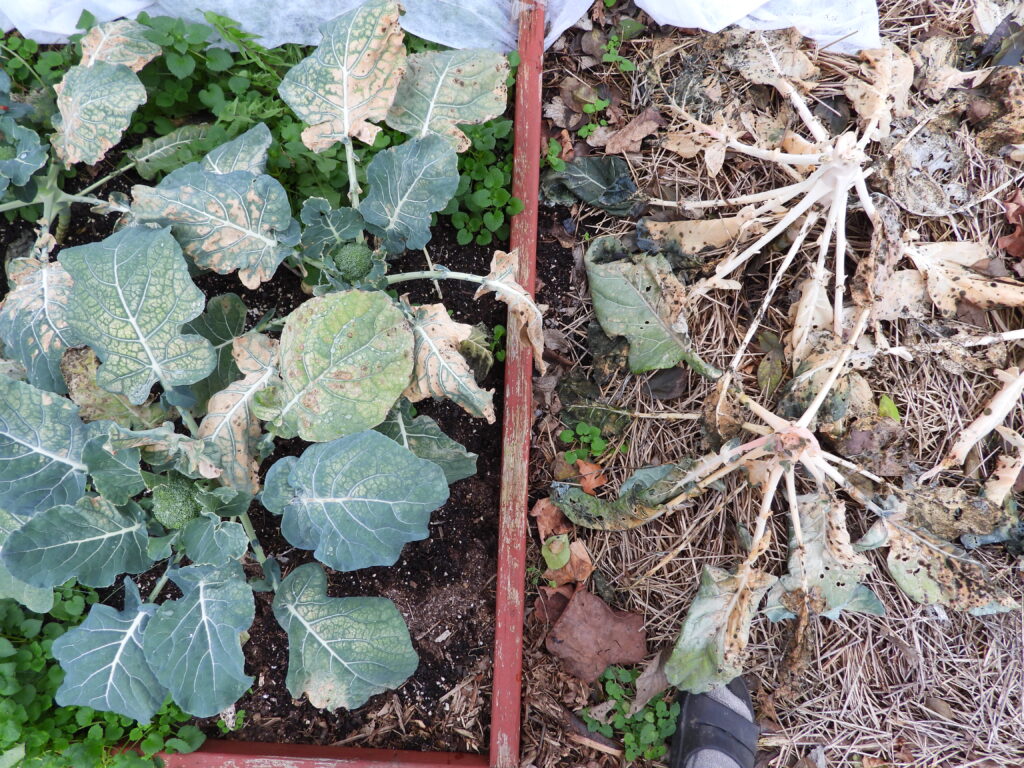
Not so fast! Freeze damage usually doesn’t show up that first morning.
A couple of weeks later, the results are clearer. Uncovered broccoli pretty much bit the dust while broccoli under cover was damaged but kept growing in the warmer spell that followed. I’m not holding my breath about getting a crop from those last few plants though.
Recommendation: Harvest the broccoli early.
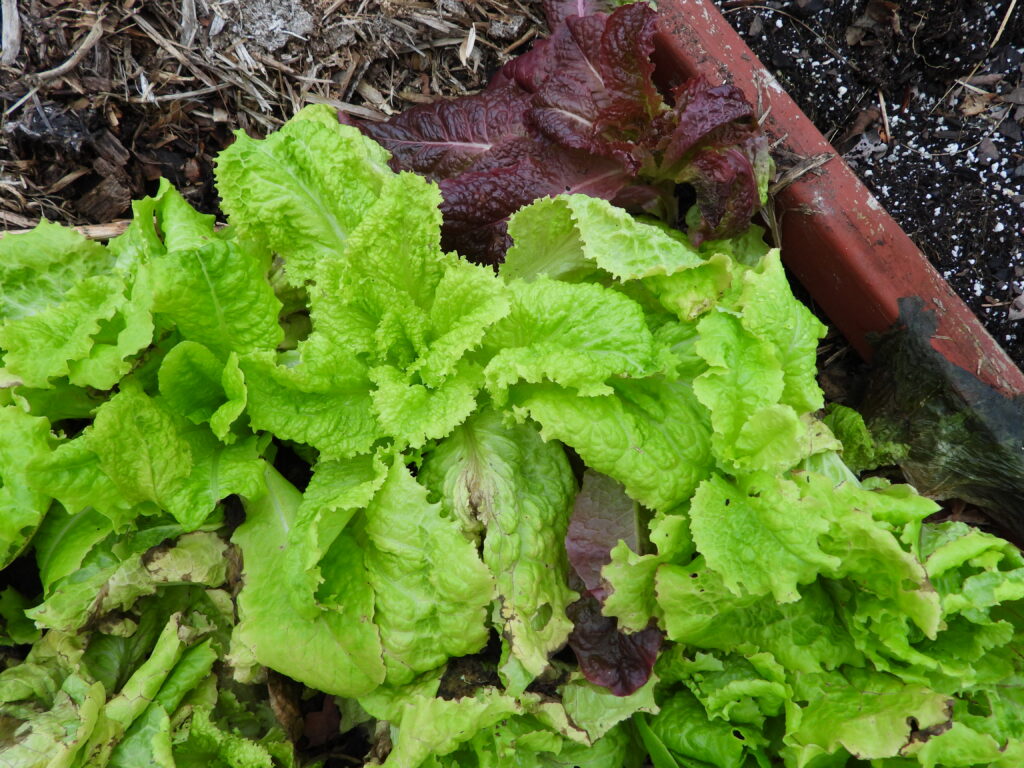
Elsewhere in the garden, I had two beds of lettuce, both under caterpillar tunnels plus row cover fabric. Both got nipped, but the younger lettuce (shown above) has since regrown. The older lettuce, which was starting to bolt, is now rotted down to nothing.
Recommendation: Age of the crop makes a different. Lettuce in its young prime can bounce back from a hard freeze if it’s protected but it’s probably a good idea to harvest anything that’s ready just in case.
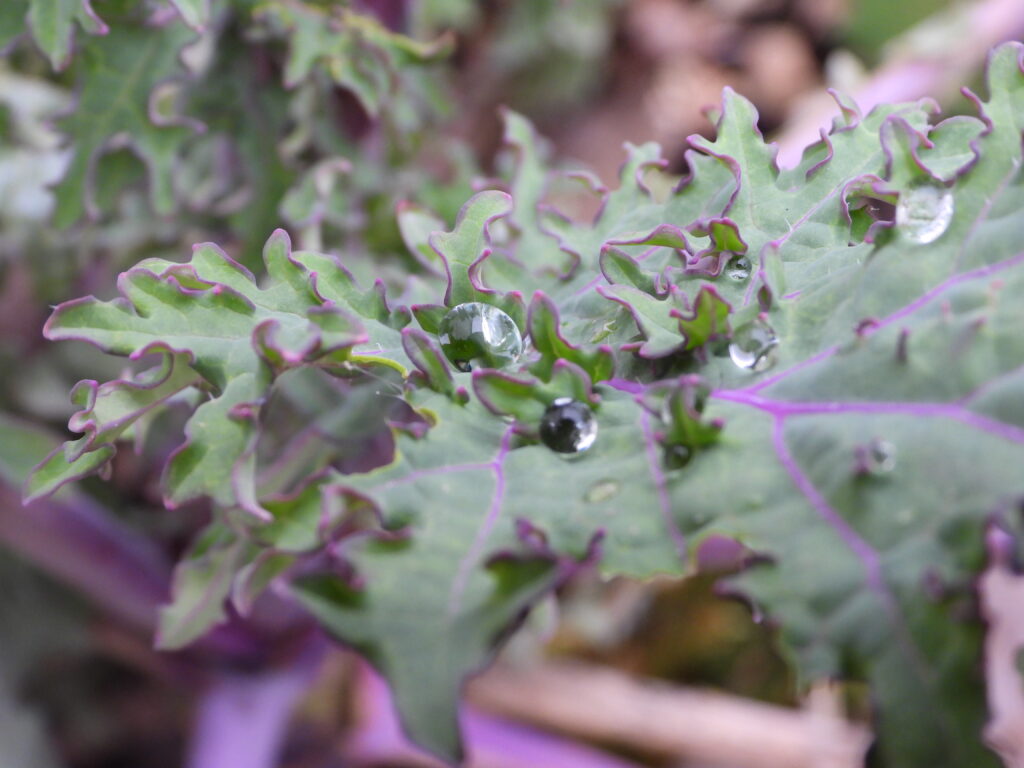
My darling kale, of course, did pretty well both under cover and in uncovered beds. Some leaves were slightly nipped; others weren’t. We’re still happily consuming a couple of meals of kale per week, often in the form of Kale Pesto.
Recommendation: Kale is our most cold-hardy fall crop if it’s moderately mature. If you’re low on row-cover, you can wait to cover this one up.
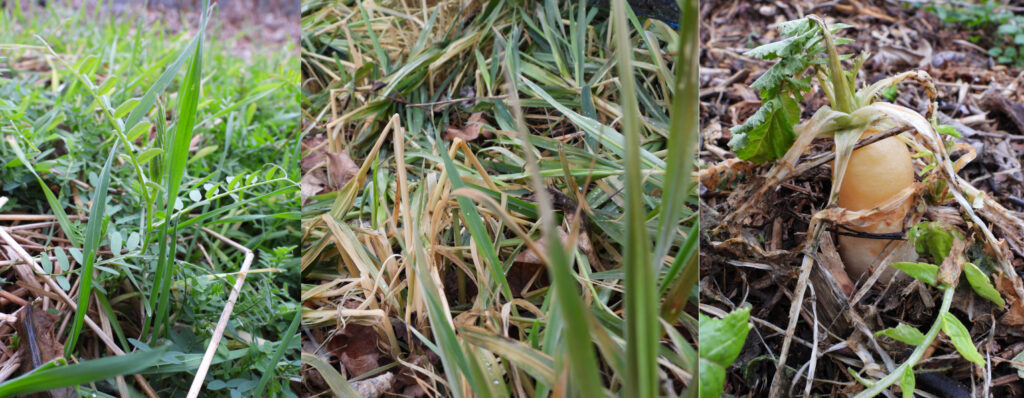
Not that I was going to do anyting to protect my cover crops, but I thought you might like to see them after the hard freeze too. On the left — rye and vetch are thriving. Center — the oats are half-dead. Right — oilseed radishes are pretty nipped too. Of course, I wanted the oats and radishes to die and rot into the soil before spring, so this is actually good news.
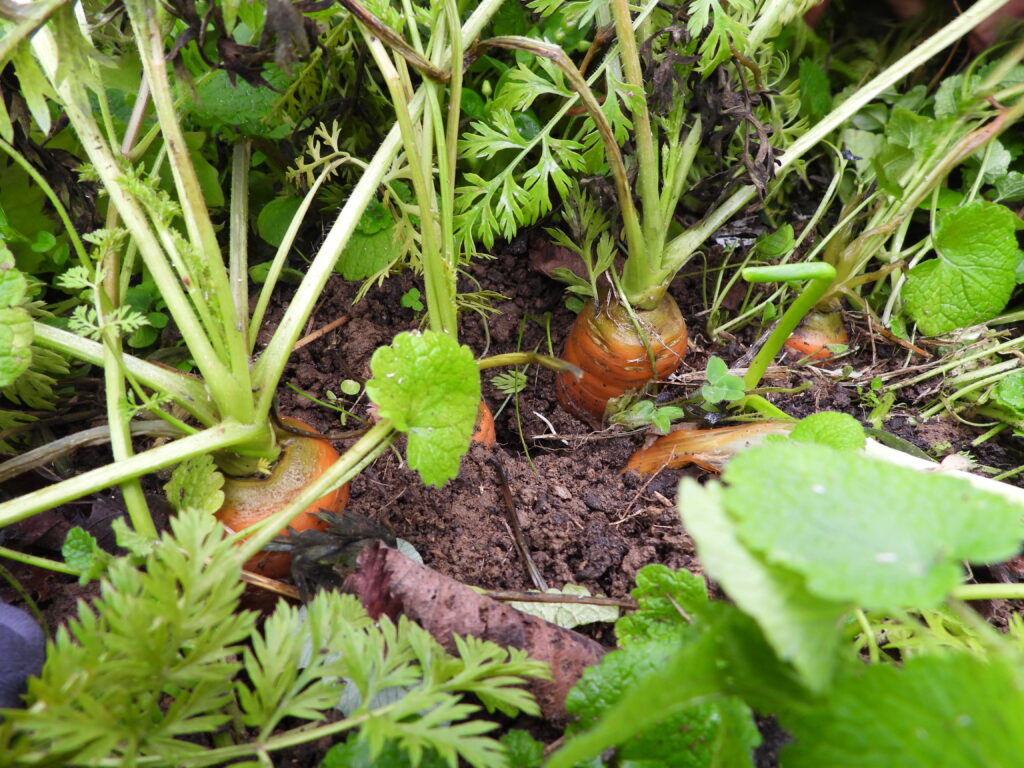
What about carrots? I got spooked and harvested the rest of ours because we had so many and they were so beautiful that I couldn’t bear to risk it. But our new friends from Trouivalle Farm put theirs under a version of a quick hoop and are still harvesting as needed out of the ground.
Recommendation: Be brave! Try leaving at least some carrots in the ground under row cover.
(Stay tuned for next week — we have a fascinating interview from Trouivalle Farm’s proprietors coming your way once Mark edits it into shape!)
My mom emailed me the following excerpt from one of my great aunt’s Organic Gardening articles:
Pick Your Vegetables Garden Fresh, June 1965, O.G. and Farming
People who care how their food tastes, pick their vegetables from the
planting row at the very last moment, and serve them
immediately–garden-fresh with all their vitamins.
Commonplace in the easy-going summertime, such performance can be made to
extend right into our cold Massachusetts winter by giving our fresh greens
plenty of mulch and added protection.
We have 4 dependable crops that,–except for the days when the ground is
covered with a thick, icy crust–may be harvested right out of the garden
and rushed to the table: perennial onion clumps, carrots, parsnips and
leeks. Each is a valuable crop: leeks rank as a delicacy among vegetables,
and, with the possible exception of parsnips, all are versatile and may be
served in a variety of ways.
ADD MULCH GRADUALLY
I keep these 4 crops heavily mulched, although, in my pre-mulching days,
all but the carrots survived zero temperatures. Late in the fall, I
winter-mulch the entire garden, surrounding the cold-weather crops with a
snug blanket of hay or leaves. However I do not cover them until much later
when 20-degree temperatures become frequent. I also mark my carrot rows out
with two-foot stakes–carrots ca n be dug up under a deep, soft snow, if
you know where they are.
[Goes on about perennial onions, frost-sweetened parsnips…]
Carrots dug from a row in winter are much sweeter and juicier than any
stored in cellar dirt. I’ve tried both kinds and can report that carrots get
woody when new growth starts in the spring. It’s good practice to save a few
good specimens for seed stock.
[She didn’t like turnips, but does admit same
can be done with turnips…Doesn’t seem to relish turnip greens, tho~]
[The last p. is all about leeks, her cock-a-leekie soup…Chinese cbge,
however thawed to a mush. Leeks in Va, she thinks will resume growing in
late Feb.]
***** In an earlier article, July, ’62, What to Do with the Vegetable
Surplus, she says to use Norway maple leaves, which lose their leaves late,
about a foot thick, weighed down with chicken wire or rocks. By then rodents
will have found their winter quarters and will not move in with your root
crops.